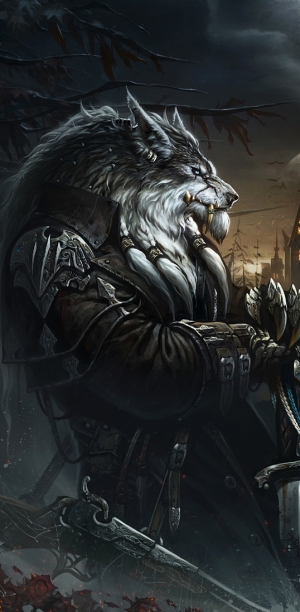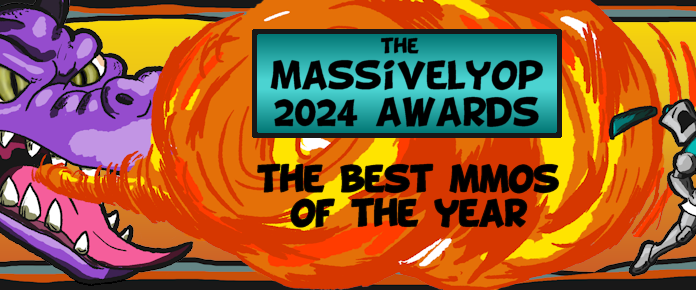
Beast tribes are a narrative conceit that I really like from Final Fantasy XI that found its way into Final Fantasy XIV as well, and I absolutely adore them. All of them. I like the Ixal, the Amalj’aa, the Sahagin, and the Kobolds. I like the Vanu Vanu and the Vath. I like the returning elements from Final Fantasy XI with the inclusion of Mamool Ja, Goblins, and Qiqirn. About the only beast tribe I’m not super fond of are the Sylphs, and that’s because they seem a little too sprite-like rather than bestial.
And these are not playable characters and never will be. And I think that’s interesting, and I think part of what makes these races and cultures so interesting is that we don’t have the inside look. They’re foreign in ways that nothing else could be, and the game’s approach to beast tribes, in general has been even-handed, subtle, and thought-provoking if you want to think about it.
Let’s start with something that should be a largely unambiguous statement: The beast tribes are not actually a threat to the spoken races of Eorzea.
“What are you talking about?” you ask, knowing that I’m going to transcribe this into the column. “Primals are a huge threat, everyone knows that. That’s not even counting the threat posed by Sahagin raiders or Kobolds in La Noscea, or the predations of the Gnath out in the Forelands. Even the Sylphs can be dangerous, and they’re unbelievably friendly!”

All of this is true. But the fact is that none of those things is inherent to any of these groups, and that’s what makes all of the difference. What gets lost along the way quite often is the reason for these threats existing and why the danger is there.
Limsa Lominsa, for example, is constantly in a sparring match with the Kobolds and the Sahagin. But the former group had a treaty with Limsa Lominsa, a treaty the Maelstrom has been violating freely ever since the Calamity in the search for more resources. Ul’dah forced out the beast tribes in an effort to assuage any potential wrath from Garlemald. Gridania has an unpleasant relationship with the Ixal, but that’s specifically because the Ixal venture into the forest from their native highlands. Even the Gnath aren’t outwardly hostile to the hunters of Tailfeather under normal circumstances, only after being pushed from both ends by dragons.
In each case, the real threats are something else entirely. The beast tribes and their primals are there as a form of defense, not simply there to lay waste to others. But the beast tribes are alien to the spoken races in the way that other spoken peoples simply are not. Why are Au Ra largely humanoid and not more lizard-like, like the Amalj’aa and the Mamool Ja?
The answer is, pretty obviously, because they’re spoken. Because they’re playable characters. Because the beast tribes are alien to the people of Eorzea, very visibly different and very much in a different category than Eorzea’s other races. A culture and history of distrust has been built up between the spoken and other races, due largely to actions that in fact have nothing to do with the beast tribes themselves.
Communication is frequently difficult with the beast tribes simply because communication is frequently not attempted. The beast tribes are seen as “other,” as somehow lesser than the spoken races. And yet even as various individuals put forth that view, the game’s narrative makes it clear that these beings are every bit as deserving of compassion, consideration, and treatment as sapient individuals.
We have every single beast tribe quest. We have Alexander. We have the portions of the main scenario dealing with the three primals, during which Merlwyb notes without an ounce of restriction that she violated the treaty, but who cares? We have Idyllshire and several quests throughout the various zones, including a long string of quests in Idyllshire in which two people were unable to see past their prejudices and assumed that Goblins must be evil because… well… they have those hats, and those masks, and… they’re up to something!

If there’s one recurring theme to FFXIV‘s storytelling, it’s that division weakens us, that seeing another thinking being as “other” is demeaning and wrong. It’s the dangers of prejudice and making judgments based on someone’s appearance rather than what you know of the people involved.
Design-wise, it makes the fact that we can’t play as beast tribe members kind of brilliant. It’s very easy to see, say, that the Gridanian assumptions about Duskwights or the Ishgardian distrust of Au Ra are both unthinking prejudice. But you don’t get to play an Amalj’aa. They remain alien to you. There’s that added layer of differentiation between what can be played and what can be seen, a subtle message that these are still people even without players helming them.
There are, of course, games that do allow you to play bestial races. But I think what’s done here vs. there actually provides an interesting contrast, starting with World of Warcraft simply because that’s the most obvious one.
 In World of Warcraft, you can play a Tauren or a Worgen with no consideration for how “different” you are. There really is no distinction between Pandaren and Furbolgs, except that the former race is playable, while the latter is portrayed as almost universally insane and either in need of rescuing or destruction. Negotiation isn’t a possibility. Bestial races that aren’t playable are outright shown to be good only for destruction, not something to be negotiated with.
In World of Warcraft, you can play a Tauren or a Worgen with no consideration for how “different” you are. There really is no distinction between Pandaren and Furbolgs, except that the former race is playable, while the latter is portrayed as almost universally insane and either in need of rescuing or destruction. Negotiation isn’t a possibility. Bestial races that aren’t playable are outright shown to be good only for destruction, not something to be negotiated with.
Even the Worgen that players can play are explicitly separate from the Worgen that players have been tasked with slaying on a regular basis for ages. There’s no “fundamental” difference; there is in fact a very real difference.
By contrast, in FFXIV you can play only one of the spoken races, and beast tribes are off-limits. If we get some sort of bug-race in the future, it’ll be another sort of spoken rather than the Vath. But running through the Vath tribe quests makes it clear that these individuals are different from one another, that these little bug people contain the same degree of heroes and villains as any other portion of the world. We see that as alien as their thoughts and behaviors may be, that’s all just anatomy and culture.
In other words, there are fundamental differences, but there’s no real difference. The differences aren’t in character or fundamental philosophy, just in details. The Amalj’aa may have gender differences that are invisible to spoken races and spurn the sort of lifestyles that define Ul’dah, but they are no more or less inherently hostile than anyone else.
I’m happy to be bloodsworn to these tribes, even if I’ll never be one of them. Because this way, we have to make an effort to understand.
Feedback, as always, is welcome in the comments down below or via mail to eliot@massivelyop.com. Next time around, I want to talk a little bit about the additions of patch 3.25, what we know about the planned patch structure from here on out, and the bits we’ve learned from the live letter.
 The Nymian civilization hosted an immense amount of knowledge and learning, but so much of it has been lost to the people of Eorzea. That doesn’t stop Eliot Lefebvre from scrutinizing Final Fantasy XIV each week in Wisdom of Nym, hosting guides, discussion, and opinions without so much as a trace of rancor.
The Nymian civilization hosted an immense amount of knowledge and learning, but so much of it has been lost to the people of Eorzea. That doesn’t stop Eliot Lefebvre from scrutinizing Final Fantasy XIV each week in Wisdom of Nym, hosting guides, discussion, and opinions without so much as a trace of rancor.












